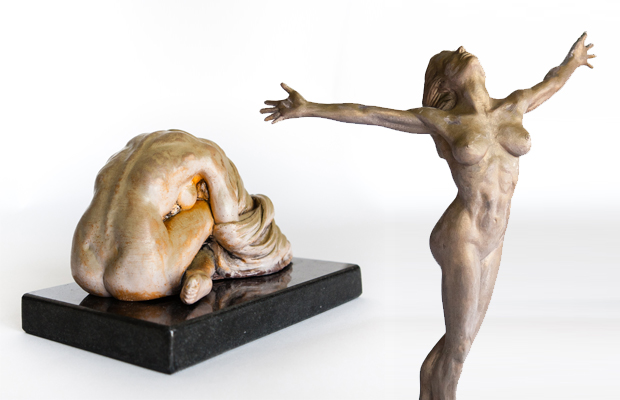Renewing our minds
During a sparing session, one of the fighters was a little timid during a fight. His skills were not showing. My martial arts instructor Renshi Herbie Bagwell told him: “It is all in your head. From the neck down you have all you need to win”. How many times do we get paralyzed by fear? How many times we lose the fight without even trying? How many times our perception makes us forget our skills? How many times our mind is keeping us away from what we are capable to achieve?
Renewing our minds is a concept shared by various sources. Practices that involve spiritual and emotional cleansing talk about the concept of focusing the mind into thinking positive in order to achieve results. Social cognitive theory in learning psychology explains the importance of life experiences to form what we think of ourselves based on our interpretations of those experiences. Therefore, it is important to take advantage of every situation to learn and form an acceptable, affirmative perception of ourselves. Faith, for example, speaks about believing that something will be done and seeing it done before they are done. Christianity speaks of the renovation of the as well:
“Do not conform to the pattern of this world, but be transformed by the renewing of your mind. Then you will be able to test and approve what God’s will is—his good, pleasing and perfect will.” (Romans 12:2)
We often follow a behavior and thinking pattern based on what our environment and experiences forced on us and we end up thinking that we have no other choice but to continue living that way (remember the kid hiding during art class). Let’s give ourselves a chance towards a new life. We can’t change the past, but we don’t have to follow the same pattern. From the neck down we have all we need to win. We have a choice! We can try again! We can try something new! We can still win the fight! We can be born again!




Intersubjective Artistic Matrix
For a while now I’ve been thinking about writing on a subject that for many artists may result in defensive argumentation, as I’ve seen in the past during some conversations and online discussions. However, it is a subject that deserves attention not to establish a definite interpretation of benefits or causes for rejection, but to understand the teaching and therapeutic benefits of engaging in this practice. In past posts, I explored the subject (read: How to Explain Your Art). During the summer I began reading the book Art Therapy and the Neuroscience of Relationships, Creativity, and Resiliency: Skills and Practices by Noah Hass-Cohen and Joanna Clyde Findlay, and they introduced to me the term “Intersubjective Artistic Matrix” (IAM). IAM defines the artist’s capacity to retain and explain the procedures utilized during the creation of a piece of art as if connecting subconscious and conscious processes.
In cognitive theory, knowledge is expressed in procedural fluency and conceptual understanding. How do we differentiate these two? There are many things we do without giving much thought. Certain procedures, with practice and repetition, become something like second nature to us. We know how to do it, so we just do it. At times, we find ourselves trying to explain what we are doing and fall short in putting into words all the elements and mental processes we often not pay attention to. Here is where conceptual understanding comes in. Conceptual understanding aligns connections and relationships between bits of information to create an explanation. Think of these two as practice and theory. There seems to be a debate about which of the two has more “knowledge value”. What if both are equally valuable? What if the context in which they are needed determines their value? What if both together are more valuable than each one of them separately? These are questions to be considered before rejecting one or the other. The more perspectives
We can expend time analyzing contexts where procedural fluency is required more than conceptual understanding, and the also the other way around. We might find contexts in which both are equally necessary. Nevertheless, the intention of looking at IAM is to seek understanding of when and how it becomes beneficial in the context of teaching and therapy. As an educator, and in my experience in the sculpting and painting parties, as well as in the classroom and private lessons, I find extremely important to have both. It could be counterproductive in a learning setting to do something for others to learn and not being able to explain the mental processes, and the procedures that interact in doing so. The opposite is also true. It is difficult to gain trust from the people we are trying to teach if we can explain all the nuances of a procedure but being incapable of doing it. Yes, there are some exceptions where it might not be necessary to prove we can do it, or situations in which we don’t have to explain what we are doing. Again, it all depends on the situation.
In therapy, and more specifically art therapy (I am not an art therapist although I had experience similar approaches within my classes) the benefits of this IAM is for the individual using art as a form of therapy. We can always try to interpret someone’s work based on our own understanding, knowledge, and biases. However, what if we could uncover the emotions and experiences from which the creation finds its inspiration and significance right from the source? What if the individual could find a way to open up to hidden emotions and experiences once expressed visually, through music, through writing, or other forms of art? Some might argue that art can speak by itself, but I can testify of how many interpretations of my art coming from other people have nothing to do with what I was thinking or feeling at the time of creation. Maybe we could give ourselves a chance to discover ourselves in our art, and allow others to do the same. Maybe someone else can find emotional and intellectual benefit in connecting process and concept if they are granted the chance to do so.